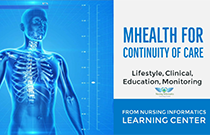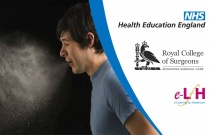Hep C Counseling and Testing
Industry Specialist
3.00 Hours
This CEU course provides guidance for counseling and testing of individuals who are at risk for or potentially infected with the hepatitis C virus (HCV). Topics discussed include: background; testing; antibody negative / non-reactive test results; antibody positive / reactive test results; confirmatory testing; and HCV rapid an....
Hepatitis C Among Homeless Individuals
Industry Specialist
1.00 Hours
This CEU course provides health care workers with information on hepatitis C, focusing on the following topics: epidemiology such as prevalence and shifting demographics; morbidity and mortality; HCV testing strategies; risk factors; counseling patients with hepatitis C; prevention; treatment and barriers to treatment; and inter....
Medication for the Treatment of Alcohol Use Disorder
Industry Specialist
4.00 Hours
This CE course reviews current evidence on the effectiveness of available medications for the treatment of alcohol use disorders and provides guidance for the use of medications in clinical practice. Topics discussed include: when to consider medications; screening and assessing patients; developing a treatment plan and selecti....
How to administer eye drops and eye ointment
Mary Shaw
Eye drops and eye ointment are the mainstay of treatment of ocular conditions. Failure to prioritise administration of these medicines can prolong the condition and may present a risk to the patient’s vision. Eye drops and eye ointments are used to treat acute and chronic conditions of the eye and surrounding structures. Eye....
How to use PRICE treatment for soft tissue injuries
Cormac Norton
This article assists nurses to use the acronym PRICE (protection, rest, ice, compression and elevation) to guide the treatment of patients with uncomplicated soft tissue injuries to their upper or lower limbs. Treatment of soft tissue injuries to limbs is important to reduce complications following injury, alleviate pain and....
mHealth for Continuity of Care
June Kaminski, RN MSN PhD(c)
15.00 Hours
This 5 module (15 CE credit) course introduces the learner to the evolving phenomena of mobile health (mHealth) in the context of continuity of care, prevention, and health promotion. The escalating use of mHealth in health care and lifestyle management is explored, grounded in the principles and theory of electronic health m....
HIPAA
Industry Specialists
2.00 Hours
The HIPAA home study course should take approximately 2 hours to complete, which meets the initial state requirement for 2 hours HIPAA education for health care providers. The program includes review of HIPAA patient privacy, security and electronic data interchange. Strict guidelines for maintaining privacy, confidentiality, an....
Issues of LGBTQ in Substance Abuse Treatment for Social Workers
Robert Paul Cabaj, M.D., et al.
3.00 Hours
For social workers to deliver skilled care to lesbian, gay, bisexual, and transgender (LGBT) clients, they need to be aware of issues specific to the LGBTQ community. This CEU course provides an overview of the use and abuse of substances in the LGBTQ community, presents information to help social workers understand cultural is....
Domestic Violence and the Holidays: Cultural Sensitivity
National Resource Center on Domestic Violence
2.00 Hours
Questions may arise about the increase of domestic violence during the holiday season and how to appropriately meet the needs of survivors and advocates working in shelters through the holiday season. This CEU course examines several issues to consider when working with survivors and their families during the holiday season.
Clinical Issues in Trauma-Informed Care
Kathleen Guarino, LMHC
2.00 Hours
This course provides a thorough discussion of trauma-informed prevention and treatment objectives along with practical counselor strategies. Specific treatment issues related to working with trauma survivors in a clinical setting are discussed as well, including client engagement, pacing and timing, traumatic memories, and cult....
HIV AIDS Introduction for Clinicians
Industry Specialists
2.00 Hours
This course provides: an HIV overview; the HIV life cycle; the stages of HIV infection; HIV testing; FDA-approved HIV medicines; HIV/AIDS clinical trials; HIV prevention; mother-to-child transmission of HIV; HIV treatment; HIV drug resistance; HIV and immunizations; and side effects of HIV medicines.
Gender and Sexuality for Those Who Identify as LGBTQ
Industry Specialists
1.00 Hours
This CEU course provides information for health care professionals relating to the terms used among the LGBTQ community, and the opportunities and risks of coming out, along with the phases of the coming out process. This material was reprinted, with permission, from the National Sexual Violence Resource Center’s publications....
Managing Adult Respiratory Syncytial Virus
Keith D’Oria & Lindsay Kim, MD, MPH
0.50 Hours
While it is often thought of as a disease in children, respiratory syncytial virus (RSV) infections cause significant illness and death in older adults every year. Clinicians are urged to learn more about the illness and death caused by RSV in these patients and to develop protocols in anticipation of vaccinations against the vi....
Improving Asthma Control Dialogue with Patients
Chris Cole & Purvi Parikh, MD
0.50 Hours
Study findings reveal a communication gap between patients with asthma and providers regarding conversation topics during routine office visits. The findings also reinforce the need to focus patient-provider conversations on symptoms, limits to daily activities, and the use of an asthma action plan.
Integrating Oral Health Into the Patient-Centered Health Home
Brett Pack, DMD and Maria Smith, MPA
1.00 Hours
The Patient-Centered Health Home is a concept being implemented through a variety of approaches including full integration, co-location, shared financing, virtual linkages and facilitated referral and follow-up. Health Homes are an important approach for helping to ensure that health center populations have access to comprehensi....
Making the Best Use of MSF A Trainee Guide
David Bruce and Elaine McNaughton and Emma C. Wilson and Joan Sargeant
0.50 Hours
This session provides a rationale for multi-source feedback (MSF) as used in medical training. It outlines the principles and concepts of MSF and gives guidance on how to make best use of MSF in improving performance.
Individual Preferences and Cultural Influences on Symptom Management in Palliative Care
Carina Saxby Medical Director
This session discusses the role of cultural influences and patients’ individual preferences on symptom management and care plans. This session was reviewed by Christina Faull and Carina Saxby and last updated in July 2015.
Home Environment
Mary Malone
0.50 Hours
This session focuses on the physical, emotional and social contexts of family life in the 21st century.
General Developmental Principles
Naomi Dale, John Oates and Alison Salt
0.25 Hours
This session is designed to build on the other Early Developmental Support sessions. It provides a learning foundation for practitioners who are seeking to better understand or undertake a planned clinical support programme with babies and young children with developmental needs and disability and their parents. It supports the....
How to Use Lasers and Other Optical Radiation Devices Safely
Sarah Pape
0.75 Hours
This session describes how to manage lasers and other optical radiation devices, offering guidance on how to ensure safe practice and outlining the actions to be taken in an emergency.
Introduction to Visual Electrophysiology
Richard G Smith
0.50 Hours
This session provides an overview of the human visual system and commonly-used electrophysiological techniques for testing its function in a clinical setting.
Multifocal Electroretinogram (mfERG)
Sinead Walker
0.50 Hours
This session covers the multifocal electroretinogram (mfERG) procedure, the underlying physiological changes measured and the interpretation of normal and abnormal mfERG reports. How mfERG results may relate to complementary diagnostic techniques such as imaging will also be covered.
How to Take a History Sudden Vision Loss
Rosemary Robinson and Ahmad Muneer Otri
0.50 Hours
This session is designed to help you take a structured history in patients with painless sudden loss of vision. From this history you should be able to formulate a differential diagnosis even before you proceed to examine the eye.
Infection Risks (Patient, Theatre, Staff) Laminar Flow
Susan Connolly
0.50 Hours
This session explains the principles of infection in the operating theatre, and precautions which are taken to reduce the risks of infection. It outlines the use of laminar air flow to reduce surgical site infections.
Incision and Closure of Skin and Subcutaneous Tissue
Jonathan Randall
0.50 Hours
This module will examine how a surgeon decides where to make an incision and techniques for closure. Instruments and materials for this will be discussed, as well as complications.
















